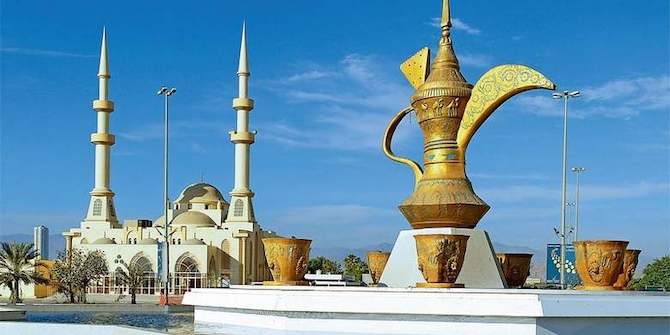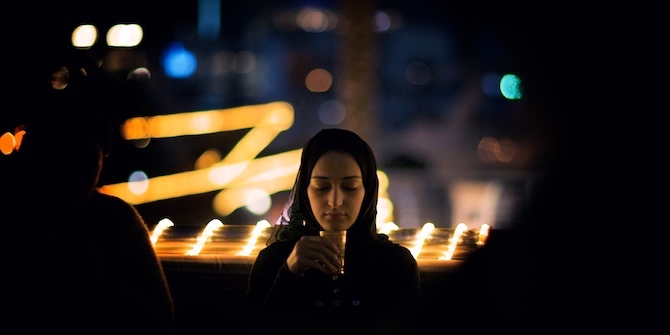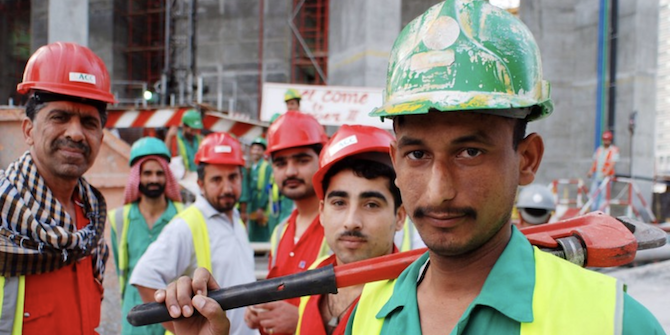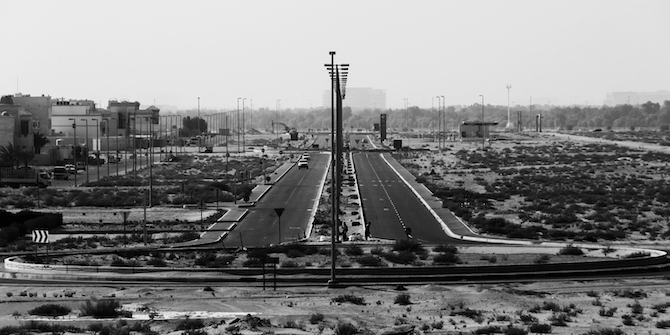by Eiman Shahin

The UAE was ranked in first place by the World Economic Forum for their road quality in 2018, however what does this mean for the people who use them every day? Roads are more than just infrastructure; they are vessels for social connections, feelings of community and a population’s overall well-being. So, what happens when such vessels are not designed to allow for equal accessibility? This is what ‘Abu Dhabi (Dis)connected’ set out to investigate and later visually exhibit; how roads connect and disconnect space and people. Since its establishment in 1966, Abu Dhabi has undergone rapid infrastructural growth; the city prominently adopted US planning principles which led to car-centric development prioritising vehicular traffic over pedestrians. The proliferation of expansive road networks in Abu Dhabi has thus transformed the city into a maze of concrete and asphalt ribbons, leaving little space for people amongst the towering overpasses, multi-lane highways, and endless traffic signals that dominate the landscape.
The exhibition ‘Abu Dhabi Disconnected’ was the visual output of a research project – ‘Roads as Tools for (Dis)connecting Cities and Neighbourhoods’, a collaboration between researchers from LSE Cities and Abu Dhabi University with the coordination and support of LSE Middle East Centre. I was initially drawn to this project as growing up in Dubai, I saw the city through a car window, at times feeling ungraspable and distant. Everyday conversations revolved around beating traffic to get to places on time, navigating foggy mornings on extensive highways, and the inconvenience of taking cars for the shortest of distances. I was excited at the prospect of contributing to a meaningful exploration of how road design impacts social connectivity and community well-being in a region of importance to me. My work as a research assistant began with preparations for the exhibition: looking through archival maps, photographs, and films, researching the spatial and economic impact of roads, creating visual communication, and assisting the team with inventory.
The main section of the exhibition featured thematic ‘clusters’ that tell the story of Abu Dhabi’s (dis)connection through photographs, text, videos, and residents’ quotes. These clusters were intentionally designed to take viewers on a visual journey through Abu Dhabi’s urban fabric, from its high-density, high-rise city centre to the lower density suburbs. Connecting these dynamically contrasting spaces is of course roads; thus, the first cluster looks at (1) ‘connectivity of space’. Taking up 20% of land mass per square kilometre and summing up to 15,312 kilometres in urban areas, roads make spatial connectivity highly accessible. Yet, perhaps interrupting this flow is the next cluster of (2) ‘constant construction’; because of car-centric development, there’s this higher need for cars, meaning a constant need for more infrastructure, so there are often ongoing construction sites in many places, all the time.
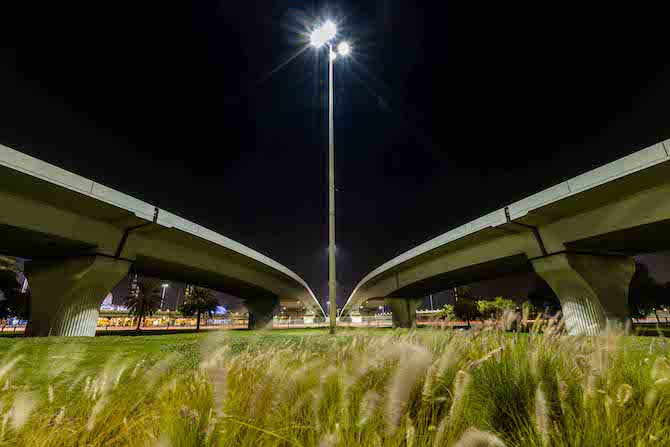
We then move to the main theme of (3) ‘disconnection’: the photographs representing this, strikingly mimic disjuncture, with large roads, curbs or inaccessible median strips visually dissecting the photographs. These scenes come from both the CBD and the suburbs, where cars take priority over people. Here, it is important to note that over 80% of the population is non-Emirati, where a large majority of this is constituted by migrant construction workers usually coming from South Asia. Living in labour camps that are far out in the peripheries of the city, they are spatially segregated. Furthermore, due to underdeveloped public transport networks, and their financial inability to participate in the city’s car-centric ways, they are also socially excluded from the social worlds they are involved in creating. They may have to resort to precarious walking journeys perhaps along the walled edges of dangerous highways or bypasses; against a visually car-oriented landscape, their walking journeys visually highlight societal disparities, which car journeys normally hide.
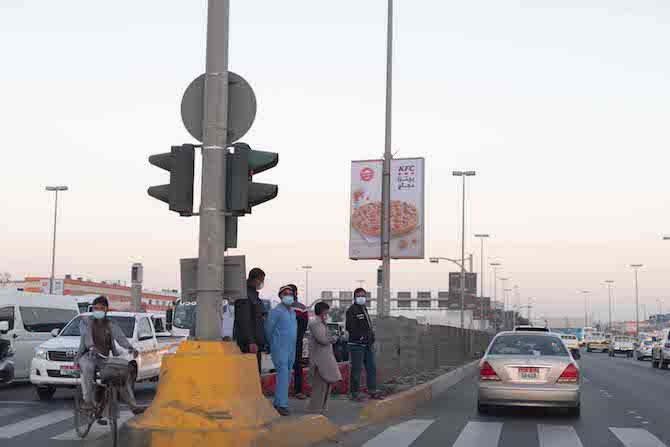
Emerging out of this disconnection, the exhibition leads visitors towards a path of reconnection in the next section. Given the obstacles created by roads, migrants display spatial agency in their inventive remaking of public space; taking sofas, often gifted by locals, they create makeshift resting areas that reclaim previously neglected or underutilised urban spaces. These impromptu spaces often become vibrant hubs of social interaction and community-building, overcoming the barriers imposed by the road-centric design of the city. Additionally, as the sun goes down and the weather cools, the city transforms as night people come out to reclaim the streets. The exhibition showcased how these gatherings serve as pockets of connectivity in a city that is often seen as disconnected.
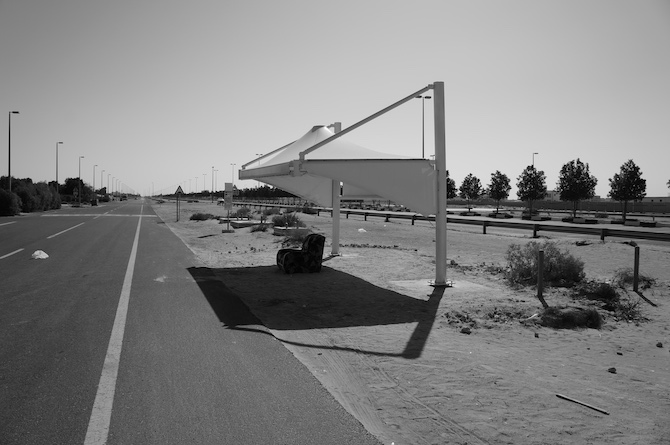
The ‘back and forth’ of the exhibition, taking viewers from social oases to visual disjointedness is perhaps resemblant of everyday life for many people in Abu Dhabi. For example, during an interview, one interlocuter explained that their spouse, who works in the nearby city of Dubai, spends the same amount of time getting to work in Dubai (from Abu Dhabi), as his colleagues living there do. This epitomises the paradoxical realities of (dis)connectedness in the city. The exhibition also featured student’s photos and videos, archival maps, and images, as well as ten case study areas with land use maps.
Finally, my work ended with the creation of the ‘Abu Dhabi Disconnected’ website which aims to continue the important discourse surrounding the exhibition. One can now explore Abu Dhabi’s infrastructural landscape and its social impacts virtually through navigating the exhibition themes just as one could in the LSE Arts Atrium. The website also includes a page titled ‘Your Roads, Your Journeys, Your Opinions‘. The exhibition featured an interactive element where viewers were encouraged to reflect on the impact of roads on their own lives; we received comments such as ‘roads kill cities, streets make them’ and ‘unwalkable roads connect me physically but disconnect me socially from the world around me’. We’d like to hear about your; do roads make you feel connected or disconnected? In relation to what and who?
Personally, working on this project highlighted to me the potential for reimagining roads not just as conduits for traffic, but as crucial components of our built environment, inextricably linked with inclusion and exclusion. By shifting focus towards street design and neighbourhood-level planning, we may create more liveable, people-centred spaces that foster a sense of community and belonging. Overall, I am grateful to have been given this rewarding opportunity, and to have worked alongside such a passionate and dedicated team. I am excited to see how the impact of their research may inform thoughtful redesign, where roads can transform from divisive barriers into vibrant and sustainable corridors of safety, walkability, and liveability, enhancing the well-being of those who use them.
This blogpost is a product of a collaborative research project between LSE and Abu Dhabi University titled ‘Roads as Tools for (Dis)connecting Cities and Neighbourhoods: a Socio-spatial Study of Abu Dhabi‘. The project forms part of the Academic Collaboration with Arab Universities Programme, funded by the Emirates Foundation.
[To read more on this and everything Middle East, the LSE Middle East Centre Library is now open for browsing and borrowing for LSE students and staff. For more information, please visit the MEC Library page.]



